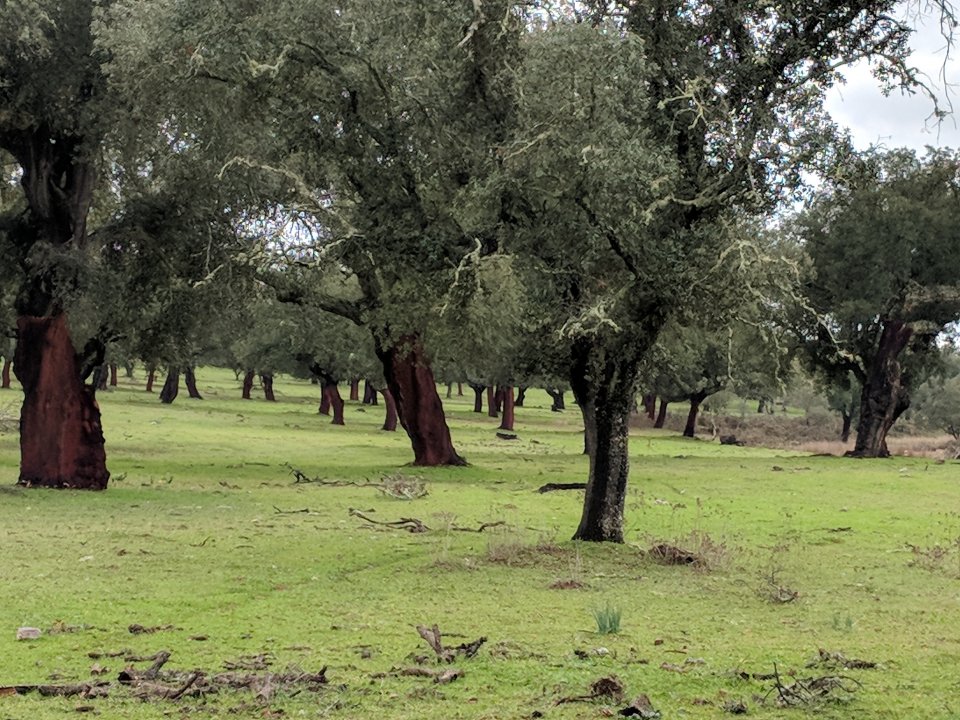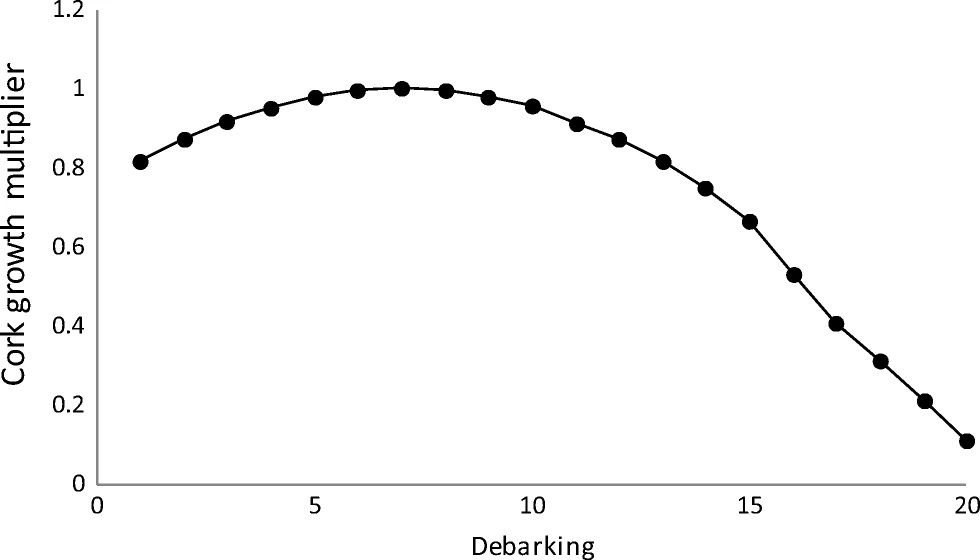
Cork is a non-timber forest product of great importance due to its excellent characteristics in terms of insulation, elasticity and sustainability. Spain is the second world producer of cork after Portugal. Traditionally, debarking is carried out at intervals ranging from 9 to 14 years, depending on the area. However, the growth of the cork is not constant over the life of the tree, so uneven debarking intervals may be advisable. Despite its economic importance, no silvicultural schedules exist which are based on optimizing the profitability of these stands. This factsheet provides guidelines for the management of cork oak stands when the aim is to optimize economic profitability.
Growth in cork calliper (cork thickness) does not depend on the site quality of the stand. Greater tree growth will mean a greater debarking surface, but not greater growth in cork calliper. In addition, cork growth is not constant over the entire tree rotation period, the amount of cork obtained in a debarking operation depending on the number of times the tree has been debarked previously. This implies that debarking operations may be more profitable when performed at uneven intervals. For the purposes of this study, the optimization of the silvicultural schedules of different cork oak stands was performed, seeking to maximize economic performance.
The analysis was performed using existing cork oak growth and cork yield models for Spain together with an optimization algorithm. The optimized schedule results for four Quercus suber stands are presented to illustrate the methodology. These stands presented differences in cork index (cork calliper at 9 years-CI) and site index (stand site quality-SI). The simulation-optimization system uses economic parameters as input data to obtain the soil expectation value (SEV), which is an indicator of the profitability. In this case, the economic parameters are the interest rate, two cork prices depending on the cork quality (expressed according to the calliper) and the price of wood for firewood. The results allow the effect of the site index, the cork index, cork prices and the interest rate on the optimal management of the stands to be assessed.
When the cork index is high, it is recommended that the rotation length be lengthened and the number of thinnings decreased to achieve the largest number of trees producing cork for as long as possible. Debarking intervals decrease as the cork index increases, and the 1st and 2nd debarking operations can take place earlier. By increasing interest rates, the optimal schedule includes fewer debarking operations with greater debarking intervals. The number of debarking operations increases as cork prices increase and decrease otherwise. As for the site index, stand management with a very low site index (8 m) would require rotation lengths of around 180 years and the first debarking operation would be delayed considerably (101 years) to be profitable. In short, to increase profitability it is recommended that flexible, optimized silvicultural schedules be used.
The application of these optimized schedules increased the profitability of these stands. A comparison of the results obtained by applying the minimum interval recommended (9 years) with an optimized schedule has been performed. When the minimum debarking interval was restricted to 9 years, the SEV decreased considerably for the better qualities (CI). Moreover, allowing shorter minimum debarking intervals improved profitability. A tool allowing forest managers to determine the optimal management of their stands considering not only stand characteristics but also market conditions, would be of great interest. This tool is not yet available but the associated technology has proved to be useful.
Future development should include the implementation of the simulation-optimization system in a user-friendly application. This application would allow forest managers to determine the best management option for their stands based on both stand characteristics and market conditions. By applying more flexible, optimized management schedules, stand profitability will improve.
María Pasalodos, pasalodos.maria@inia.es
Timo Pukkala, pukkala.timo@uef.fi
Mariola Sánchez, msanchez@inia.es
Further information
Pasalodos-Tato, M., Pukkala, T., Cañellas, I. et al. Optimizing the debarking and cutting schedule of cork oak stands. Annals of Forest Science 75, 61 (2018).
Tomé M, Coelho MB, Pereira H, Lopes F (1999) A management oriented growth and yield model for cork oak stands in Portugal. In: Amaro A, Tomé M (eds) Empirical and process-based models for forest tree and stand growth simulation. Edições Salamandra, Novas Tecnologias, Lisboa, pp 271–289
Mariola Sánchez

Variation of cork growth rate as a function of the number of debarkings (adapted from Tomé et al. 1999)
